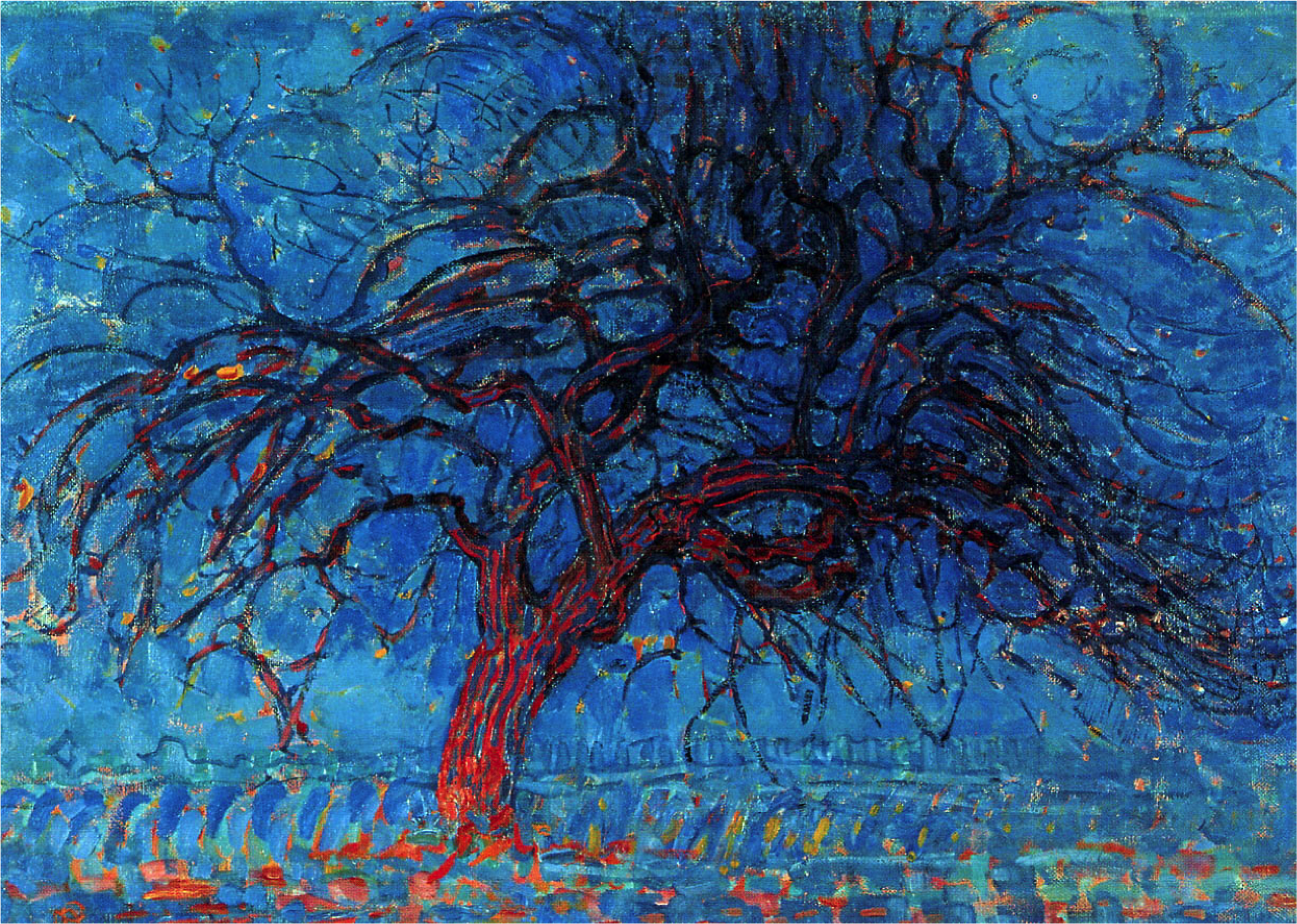A New Take on the Iconic Girl Reading a Letter by Vermeer
The recently restored Girl Reading a Letter at an Open Window by Johannes Vermeer (1632-1675) is often said to be that of a young woman reading a...
Tom Anderson 26 September 2024
Piet Mondrian, one of the founders of the Dutch modern movement De Stijl, is mostly known for his pure abstractions from the 1920s, reduced to lines, rectangles, and primary colors. You know what I mean, the not-very-surprising Mondrian paintings:

However, before Piet Mondrian came to this he was trying to find his way. He tried various styles of painting. A turning point in his career was in 1911 when he arrived in Paris from the Netherlands. He started to experiment with Cubism and integrated himself into the Parisian Avant-garde. At one point he removed an “a” from the Dutch spelling of his name (Mondriaan). That led him to his abstract ideas.
Cubism sounds close when you think about DeStijl and Neoplasticism, but Symbolism? Post-impressionism? Here you will find five surprising Mondrian paintings from the collection of Kunstmuseum Den Haag which is filled with works from his early period that you wouldn’t expect!

This painting could surprise any lover of Mondrian’s minimalistic compositions. The bold, contrasting shades and the background composed of curved lines could make one think of Edvard Munch. The girl’s focused gaze and the title Devotion put it in a symbolic context. What could she be devoted to – God, her parents, her best friend, or school? All of this is represented by the flower above her head, choose your favorite interpretation!

Red windmill on a red field with a yellow sky? It can only be Fauvism. The second of our surprising Mondrian paintings shows reality in a completely unrealistic color palette, which was the specialty of Fauvist painters. The use of yellow, blue, and red could be seen as an introduction to Mondrian’s later compositions.

The evening tree could easily be a work by the famous Post-impressionist painter Vincent van Gogh. The expressionistic tree branches and the red trunk create a strong contrast with the blue background. Even though we know we are looking at a landscape, the composition does not have much depth. Maybe at this point, Mondrian was already experimenting with flatness in painting.


Cubism is all about transforming everyday objects into geometric compositions. To goal was to change the items up to a point where the viewer can still recognize them, but at the same time not consider them as realistic representations. In Still Life with Ginger Jar I, we can see a jar that is probably standing on a table, surrounded by other kitchen items reduced to geometrical shapes. The same happened with The Grey Tree. We can still name it, but definitely, we can’t look at it as a lifelike composition.
DailyArt Magazine needs your support. Every contribution, however big or small, is very valuable for our future. Thanks to it, we will be able to sustain and grow the Magazine. Thank you for your help!